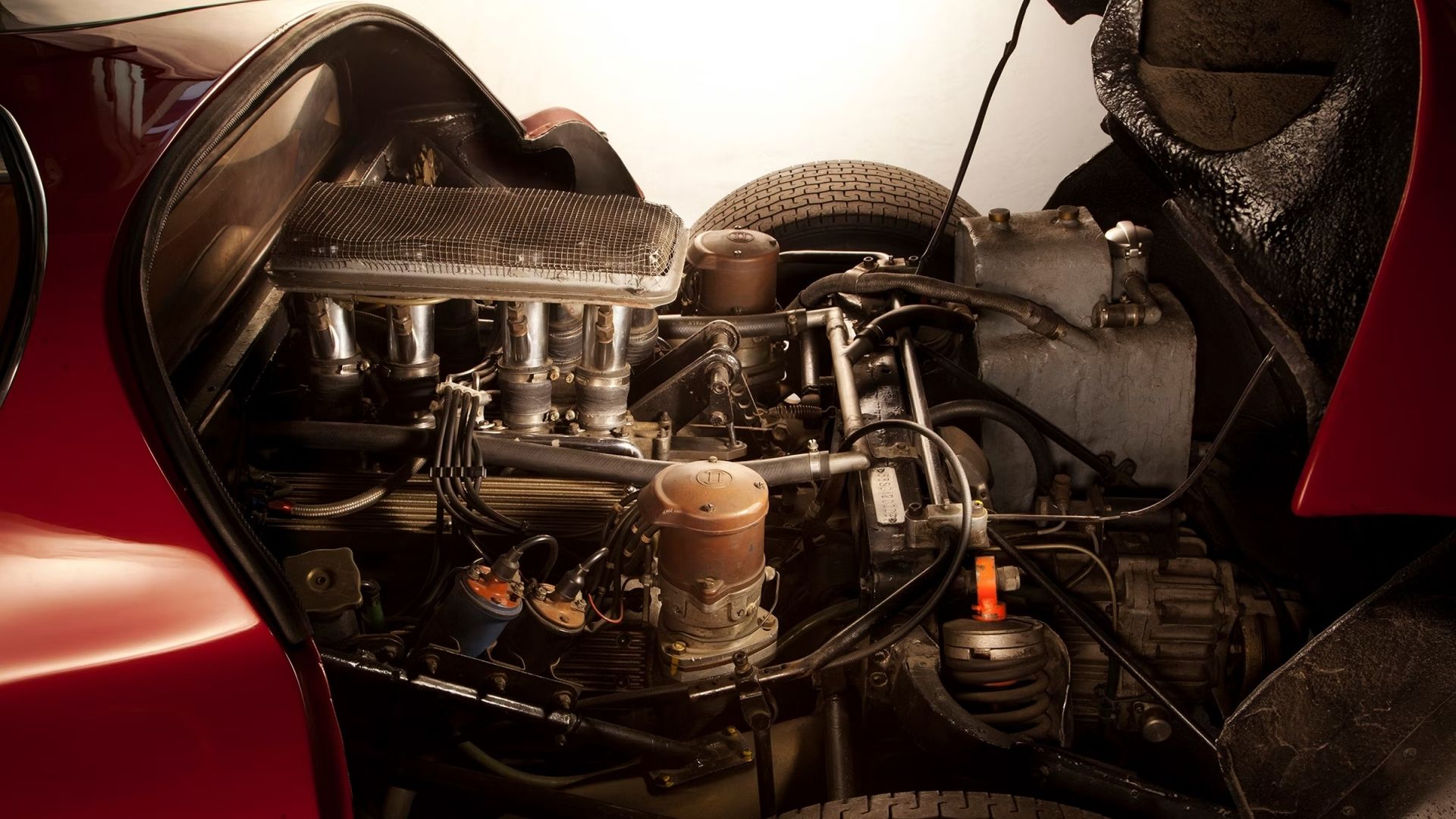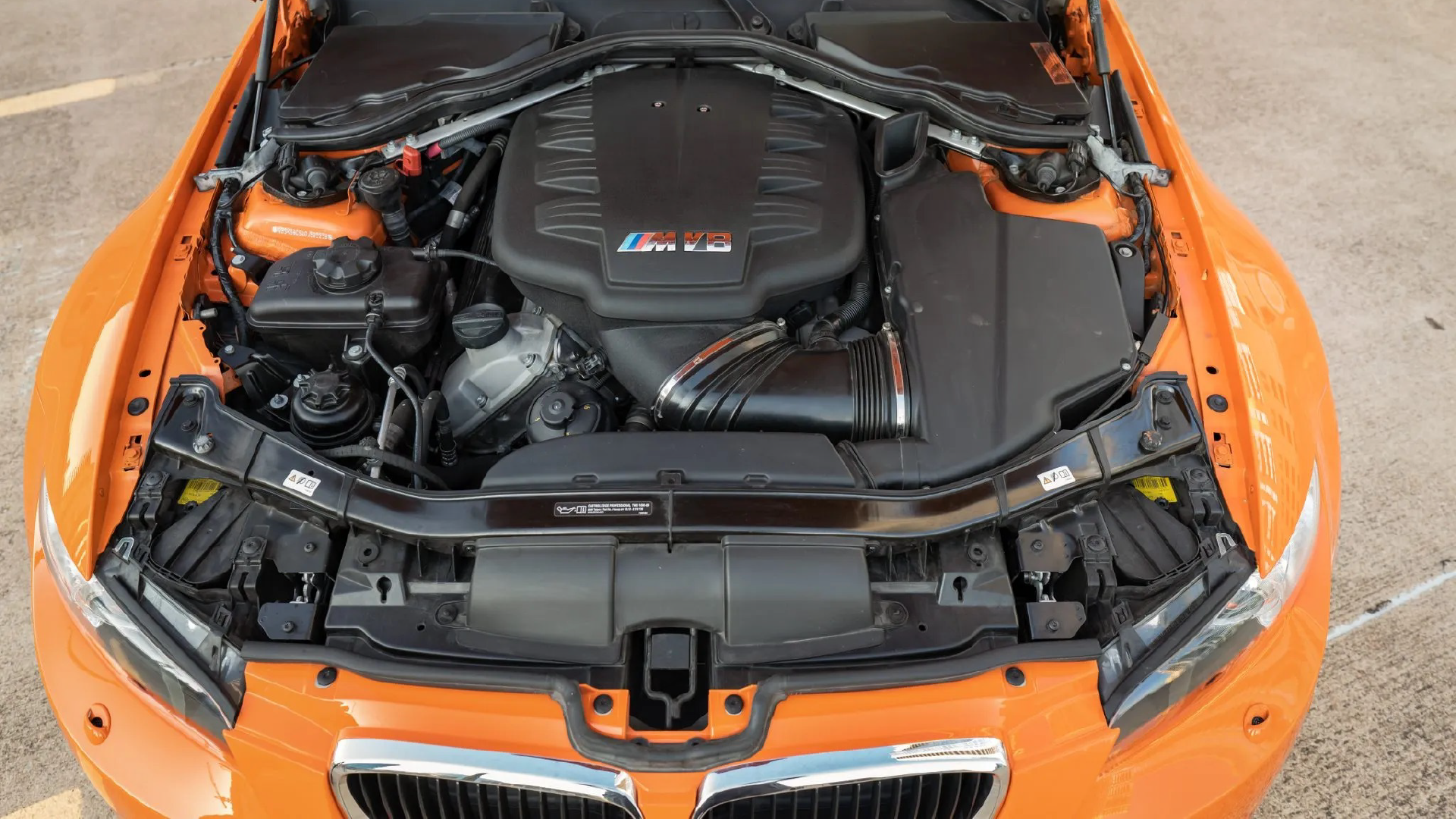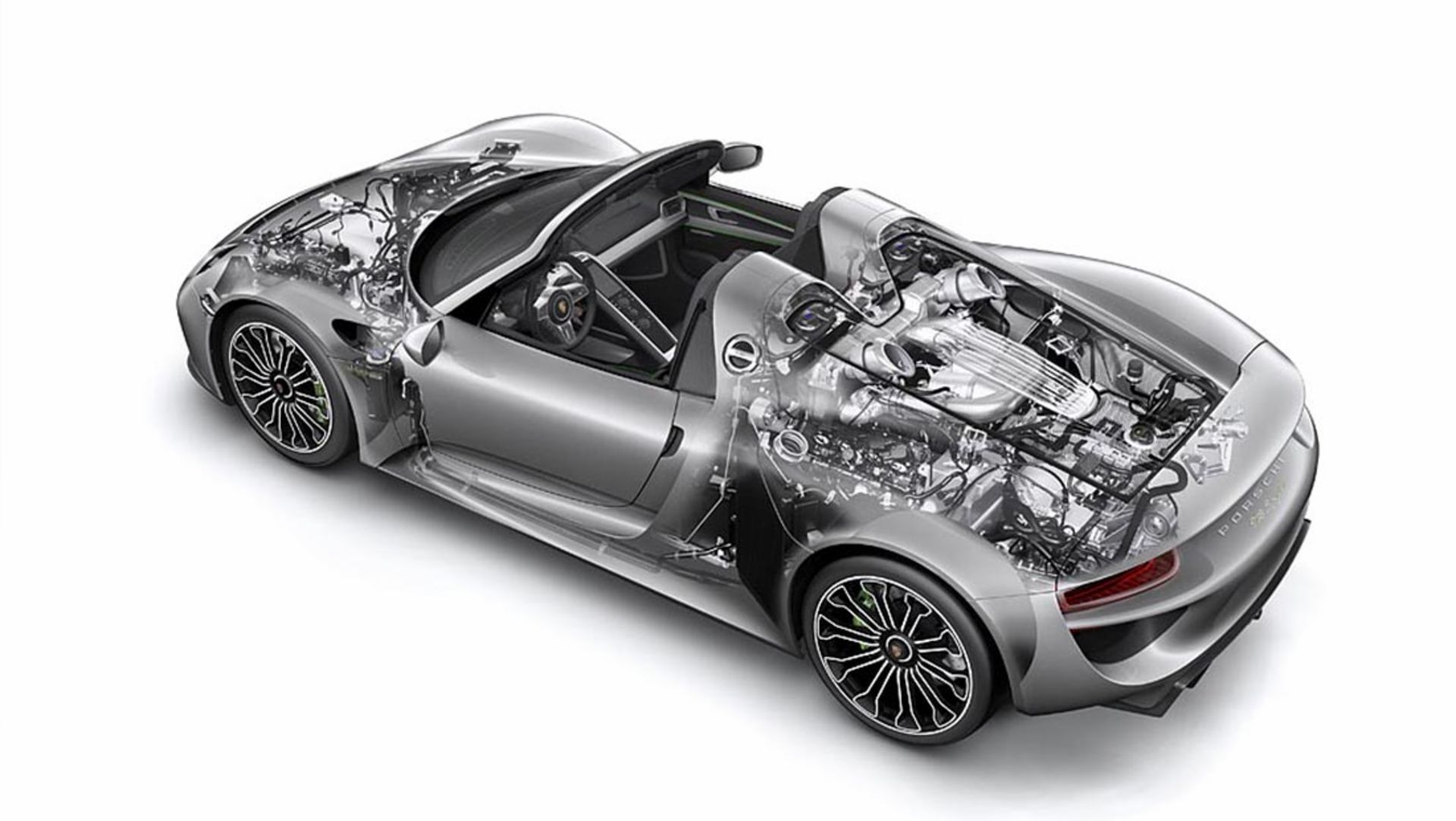Despite it being a dying breed today, the V8 engine configuration is one of the most beloved engine layout of all time. Enthusiasts love the thrill they get when they press the gas pedal and hear the V8 roar to life, and experience the smooth power and torque they deliver. The majority of V8 engines use a 90 degree V-angle between the two banks of cylinders. This angle results in good engine balance, which results in low vibrations.
Since the 1950s, the American public have had an unwavering love for the V8 engine, it is still considered a mainstay of their manufacturers’ line-up. Considering their popularity in the US, it is a surprise that the V8 engine configuration has a French origin. Intended to be used on speedboats and aircraft, the 1904 Antoinette V8 is the first to be patented and manufactured.
A keen observer can easily notice the difference in sound an American V8 engine makes as opposed to its European counterpart. Although it is a general trend and not a rule, American V8 engines are known for their low rumble, which stems from the uneven firing order caused by their cross-plane crankshaft. However, European V8 engines have a high-pitched scream and uniform exhaust pulses due to their flat-plane crankshaft.
Unlike the European market, Americans have always basked in the ubiquity of the V8 engine among cars intended for the wider public. The Europeans seem to largely reserve this layout for performance-oriented cars, and luxury cars. This makes the V8 engine all the more special and savory in this part of the ocean, and here are the ten greatest V8 engines to ever come out of Europe.
We’ve referred to manufacturer websites and reputable sources such as: Car and Driver, and Road and Track to bring you this list of the 10 Greatest European V8 engines ever made.
10 Tatra T87 3.0 L Air-Cooled V8
Power Output: 85 HP
Few have heard of this legendary car manufacturer. Based in Czechoslovakia, Tatra is the third-oldest automobile manufacturer, after Mercedes-Benz and Peugeot. Known for their avant-garde designs and innovative technologies, Tatra came to international prominence in the interwar period with its line of affordable cars based on backbone tube chassis, aerodynamic design and air-cooled engines.
Engine Specs
|
Manufacturer |
Tatra |
|
Production Years |
1936 – 1950 |
|
Configuration |
90° SOHC V8 |
|
Displacement |
2,969 cc (3.0L) |
|
Power |
85 HP |
|
Torque |
88 lb-ft |
|
Fuel |
Gasoline |
|
Induction |
NA |
|
Cooling |
Air-Cooled |
|
Noteworthy Application |
Tatra T87 |
A successor to the short-lived T77, the T87 is a six-passenger large luxury sedan that could hit nearly 100 mph in the 1930s. The T87 was an extremely aerodynamic car, and was ranked among the fastest production cars in the world at the time. What made this engine so special, apart from being a rear-mounted, air-cooled hemi-V8, was that it achieved those speeds while barely sipping fuel at approximately 20 MPG, at a time when an equivalent sized sedan had 6-9 MPG.
9 Alfa Romeo 33 Stradale 2.0 L V8
Power Output: 227 HP
The Alfa Romeo 33 Stradale is among automotive royalty, and considered one of the most beautiful cars of all time. The 33 Stradale is the road going version of the Tipo 33 Stradale race car, with only 18 examples produced between 1967 – 1969. It was one of the first supercars, and was the fastest production car of its time.
Engine Specifications
|
Manufacturer |
Alfa Romeo |
|
Production Years |
1967 – 1969 |
|
Configuration |
90° DOHC V8 |
|
Displacement |
1,995 cc (2.0L) |
|
Power |
227 HP |
|
Torque |
152 lb-ft |
|
Fuel |
Gasoline |
|
Induction |
NA |
|
Cooling |
Liquid-Cooled |
|
Noteworthy Application |
Alfa Romeo 33 Stradale |
The engine is one of the smallest V8 engines ever installed in a road car, at 2.0 L displacement, but revved up to 10,000 rpm. This race-bred engine had dual overhead cams, flat-plane crank, dry-sump oil lubrication, SPICA fuel injection, and twin spark plugs. The V8 engine in the Alfa Romeo Montreal closely resembles this engine, but differed on many aspects.
8 Rover 3.5-5.0 L V8
Power Output: 158-340 HP
The Rover V8 is one of the most legendary and important engines to ever come out of the United Kingdom. This British icon ironically began its life as a Buick 215, and is a compact, lightweight (317 lb), all aluminum OHV push-rod V8 with high power output. The Rover V8 has much the same reverence in Britain as the small-block Chevy V8, being ubiquitous in application and common among kit cars.
Engine Specifications
|
Manufacturer |
General Motors, Rover, Land Rover, MG, TVR |
|
Production Years |
1960 – 2006 |
|
Configuration |
90° OHV push-rod V8 |
|
Displacement |
3,528–4,997 cc (3.5-5.0 L) |
|
Power |
158-340 HP |
|
Torque |
210–350 lb-ft |
|
Fuel |
Gasoline |
|
Induction |
NA, Turbocharged (on some applications) |
|
Cooling |
Liquid-Cooled |
|
Noteworthy Application |
Majority of Land Rovers, Range Rovers and TVRs, Rover SD1, Morgan Plus 8, Marcos Mantis |
Rover began production of the V8 in 1967, after purchasing the rights and tooling from General Motors. Few companies had a V8 engine in the UK back then, let alone one that weighs less than contemporary straight-4 engines. The qualities of the Rover V8 have landed this icon in a whole host of vehicles within its near 40-year lifespan, from 4×4 Land Rovers, to exciting sports cars like the TVR Chimaera.
7 BMW S65 4.0 L V8
Power Output: 414 HP
The S65 is not BMW’s first, or last V8 engine, but it was the first V8 engine independently developed by the M division as a replacement for the outgoing S54 straight-six. The S65 shares the same all aluminum construction, same cylinder dimensions, similar ITB setup, and VVT system as the S85 screaming V10 engine used in the E60 M5. It is not related to the S62 of the E39 M5 as many presume.
Engine Specifications
|
Manufacturer |
BMW |
|
Production Years |
2007–2013 |
|
Configuration |
90° DOHC V8 with Double VANOS |
|
Displacement |
3,999 cc (4.0 L) |
|
Power |
414 HP |
|
Torque |
295 lb-ft |
|
Fuel |
Gasoline |
|
Induction |
NA |
|
Cooling |
Liquid Cooled |
|
Noteworthy Application |
E90/92/93 BMW M3 |
When the first round of E90 M3s made their way to buyers and journalists alike, they praised the S65 as a world-beating gem of an engine, even taking the international engine award from 2008-2012 in the 3.0-4.0 L category. They revved up to 8,300 rpm with peak torque at 3,900 rpm. The E92 M3 is the only generation of M3s to ever be graced with a V8, reverting to their iconic straight-six in subsequent generations.
6 Cosworth DFV 3.0 L V8
Power Output: 480 HP
The Cosworth Double Four Valve (DFV) engine might be the most successful racing engine of all time. This engine dominated Formula 1 for more than a decade, also finding success at Le Mans and in IndyCar. Its development in 1967 for Colin Chapman’s Team Lotus was sponsored and funded by a major American automotive manufacturer, Ford.
Engine Specifications
|
Manufacturer |
Ford-Cosworth |
|
Production Years |
1967–1983 |
|
Configuration |
90° 32-valve DOHC V8 |
|
Displacement |
2,993 cc (3.0 L) |
|
Power |
400–530 HP |
|
Torque |
221–280 lb-ft |
|
Fuel |
Gasoline |
|
Induction |
NA |
|
Cooling |
Liquid cooled |
|
Noteworthy Application |
Lotus 49, McLaren MP4/1, Matra MS10, Tyrell 003 |
When it debuted in 1967, it was apparent that there was no competition: the Ferrari engine was underpowered; the BRM was complex and too heavy; the Maserati was unreliable; the Honda was overweight; while Dan Gurney’s Weslake motor was powerful but unreliable. It was latter decided that the engine is available for purchase worldwide via Cosworth. What followed was a golden era of formula 1 racing in which all teams, big and small, were equalized by this competitive, light, compact, easy to work with and relatively cheap engine.
5 Jaguar AJ-V8 3.2-5.0 L
Power Output: 240-592 HP
By the end of the 80s, it was clear that the straight-6 and the V12 were aging for their time, they were heavy, and their length became a nuisance when it came to crash performance due to its lack of crumple zones. In 1997, it replaced both the straight-6 AJ16 and the V12. Being the fourth engine in the company’s history, the AJ is an in-house V8 engine, designed before Ford’s acquisition of the company, and still offered in Jaguars today.
Engine Specifications
|
Manufacturer |
Jaguar |
|
Production Years |
1996–present |
|
Configuration |
90° 32-valve DOHC V8 |
|
Displacement |
3.2 – 5.0 L |
|
Power |
240–592 HP |
|
Torque |
233–561 lb-ft |
|
Fuel |
Gasoline |
|
Induction |
NA, Supercharged |
|
Cooling |
Liquid Cooled |
|
Noteworthy Application |
Jaguar XKR, Jaguar F-type, Jaguar XF, Range Rover (P38A, L322 & L405), Aston Martin V8 Vantage |
Despite ford ceasing production in 2020, JLR took the torch and lives on in the current generation of Jaguar F-type. Filling the void created by the then aging Rover V8, Range Rover used this engine for approximately 20-years until 2021. The AJ-V8 also saw light as a slightly modified version in the 2005 – 2017 Aston Martin V8 Vantage.
4 Ferrari F136 FL 4.5 L V8
Power Output: 597 HP
First debuted in the Maserati Coupe and Spyder, the F136 is an atmospheric high-revving unit jointly developed between Ferrari and Maserati, with production taken on by Ferrari. Curiously, this same engine had a different crankshaft for the different companies: while Ferrari used a flat-plane crank, Maserati and the Alfa Romeo 8C used a cross-plane crank.
Engine Specifications
|
Manufacturer |
Ferrari-Maserati |
|
Production Years |
2009–2015 |
|
Configuration |
90° 32-valve DOHC V8 |
|
Displacement |
4,499 cc (4.5 L) |
|
Power |
597 HP |
|
Torque |
398 lb-ft |
|
Fuel |
Gasoline |
|
Induction |
NA |
|
Cooling |
Liquid Cooled |
|
Noteworthy Application |
Ferrari 458 Speciale |
Ferrari took the F136 to the next level by utilizing the same technology they used on their F1 engines, going as far as manufacturing the F136 in the same factory used by the F1 team. One of its most notable achievement is its high specific output on its application in the Ferrari 458 Speciale. It hits a remarkable 132.6 HP/L, still ranking among the most powerful per volume naturally aspirated engines of all time.
3 Porsche 918 Spyder M18.00 4.6 L V8
Power Output: 599 HP
The technological advancements and hybrid hypercar aura of the Porsche 918 Spyder usually overshadows the masterpiece under the hood. Derived from the flywheel-less V8 found in the championship winning Porsche RS Spyder LMP2 car; the engine in the 918 Spyder is the most advanced and the highest specific output engine that Porsche has ever put on a road-going car.
Engine Specifications
|
Manufacturer |
Porsche AG |
|
Production Years |
2013 – 2015 |
|
Configuration |
90° 32-valve DOHC V8 |
|
Displacement |
4,593 cc (4.6 L) |
|
Power |
599 HP |
|
Torque |
398 lb-ft |
|
Fuel |
Gasoline |
|
Induction |
NA |
|
Cooling |
Liquid Cooled |
|
Noteworthy Application |
Porsche 918 Spyder, Porsche 918 RSR |
The V8 made use of extensive lightweight components such as: titanium connecting rods, and thin-walled low-pressure castings of the crankcase and the cylinder heads, which ultimately resulted in this 4.6 L engine just weighing at a feather like 298 pounds. It revved up to an exhilarating 9,200 rpm, combined with the three electric motors, the 918 Spyder sprung to 60 mph in 2.6 seconds according to Porsche, but independent tests proved it can achieve much lower.
2 Mercedes-Benz M156 6.2 L V8
Power Output: 451-622 HP
AMG is iconic for their large meaty high-performance V8 engines, and are the beating heart of performance over at Mercedes-Benz. In 2007, they unveiled their first independently designed high-performance V8 meant for road going cars. Despite it’s 6.2 L displacement, it was marketed as the 6.3 Liter commemorating the legendary 6.3 L M100, which was Mercedes’ first V8.
Engine Specifications
|
Manufacturer |
Mercedes-AMG |
|
Production Years |
2006 – 2014 |
|
Configuration |
90° 32-valve DOHC V8 |
|
Displacement |
6,208 cc (6.2 L) |
|
Power |
451–622 HP |
|
Torque |
443–479 lb-ft |
|
Fuel |
Gasoline |
|
Induction |
NA |
|
Cooling |
Liquid Cooled |
|
Noteworthy Application |
CLK 63 AMG, C 63 AMG, S 63 AMG |
The M156 is the last naturally aspirated engine made by AMG, with Mercedes focusing on turbocharging on subsequent engine designs. It had a high compression ratio at 11.3:1, and torque available from low down the rpm range. The engine that was inserted in the SLS AMG and current AMG GT3 is a highly reworked setup of the M156 dubbed the M159.
1 Koenigsegg Jesko 5.0 L Twin-Turbocharged V8
Power Output: 1,281 HP
Jesko is named after the father of the company’s founder, Christian Von Koenigsegg. It is equipped with the most advanced and impressive power unit ever put on a road-going car spawning a new automotive class: the Megacar. The Jesko comes in two variants: the track focused Jesko Attack and the top speed focused Jesko Absolut. Koenigsegg claims that its simulations reveal that the Jesko Absolut can reach a staggering 330 mph.
Engine Specifications
|
Manufacturer |
Koenigsegg Automotive AB |
|
Production Years |
2021–present |
|
Configuration |
32-Valve DOHC |
|
Displacement |
5,065.48 cc (5.0 L) |
|
Power |
1,281 HP (Gasoline) 1,603 HP (E85) |
|
Torque |
738 lb-ft (Gasoline) 1,106 lb-ft (E85) |
|
Fuel |
Gasoline, E85 biofuel |
|
Induction |
Twin-Turbocharged |
|
Cooling |
Liquid Cooled |
|
Noteworthy Application |
Koenigsegg Jesko |
Cranking out this much power on a road-going car is no easy feat while passing a myriad of emissions regulations. The absured 1,600 hp figure of the Jesko is achieved by using an environmentally friendly E85 biofuel and a whole host of innovations. Jason Fenske of the Engineering Explained channel unravels in great detail all the intricate engineering that went into the design of the Jesko’s engine.









